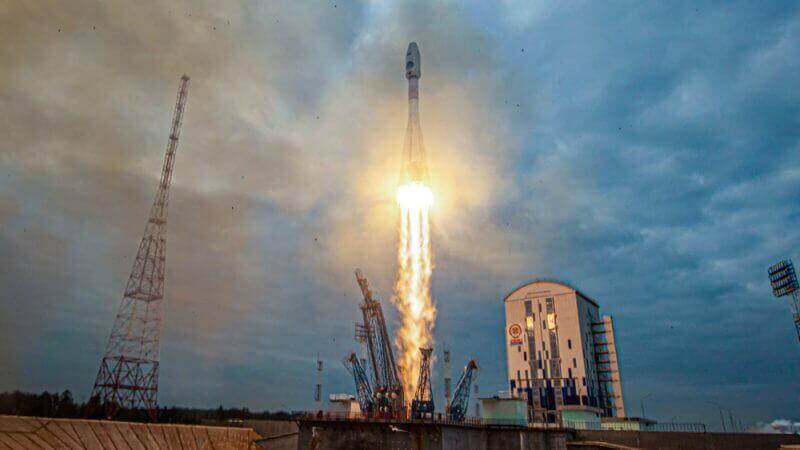On Friday, Russia launched its first moon-landing spacecraft in 47 years, aiming to become the first country to carry out a soft landing on the lunar south pole, which is believed to hold pockets of water ice.
The Russian lunar mission, the first since 1976, is competing with India, which launched its Chandrayaan-3 lunar lander last month, and China and the US, both of which have advanced lunar exploration programmes aimed at the lunar south pole.
Russia Launches Lunar Lander
On Friday, a Soyuz 2.1v rocket carrying the Luna-25 crafted took off from the Vostochny cosmodrome, 3,450 miles (5,550 km) east of Moscow, with its upper stage moving the lander out of Earth’s orbit towards the moon over an hour later, as reported by Russia’s space agency Roscosmos.
The Russian lunar lander is scheduled to land on the moon on 23 August — on the same day as an Indian craft, which was launched on 14 July.
The Russian spacecraft will reach the moon’s vicinity in approximately 5 and a half days, and then spend three to seven days orbiting at roughly 100 kilometres (62 miles) before reaching the surface.
Russia’s space agency aims to demonstrate that Russia “is a state capable of delivering a payload to the moon,” and “ensure Russia’s guaranteed access to the moon’s surface.”
The Soviet Union’s Luna-2 mission was the first to reach the moon’s surface in 1959, and the Luna-9 mission was the first to make a soft landing on the moon in 1966.
Only the Soviet Union, the US, and China have accomplished successful moon landings.
Off to the Moon! Russia’s interplanetary station Luna-25 spacecraft blasts off from Vostochny cosmodrome
— RT (@RT_com) August 11, 2023
Details: https://t.co/ifaoiu5pfF pic.twitter.com/NWwRODHonK
Significance of Lunar South Pole
The moon’s south pole, also known as the lunar south pole, is particularly interesting to scientists because they believe the permanently shadowed polar craters might contain water. The lunar south pole has craters that are distinct in their way, as sunlight cannot reach their interiors.
According to reports, these craters are cold traps that have preserved a fossil record of hydrogen, water ice, and other volatiles from the early solar system. Future explorers might be able to convert the frozen water in the rocks into air and rocket fuel.
Ed Bloomer, an astronomer at Britain’s Royal Observatory, Greenwich, said, “the moon is largely untouched, and the whole history of the moon is written on its face.” “It is pristine and like nothing you get on Earth. It is its own laboratory,” he remarked.
The Luna-25 will collect the moon’s rock and dust samples. The samples are critical for studying the moon’s environment before establishing a base there, as reported by experts.
Luna-25, Russia’s first lunar mission since 1976, has lifted off. It will try to land near the moon’s south pole, where the presence of water ice has attracted the attention of numerous space programs, and make a year’s worth of scientific observations. https://t.co/7a0S6NS4tt
— The New York Times (@nytimes) August 10, 2023
India’s Chandrayaan-3
Chandrayaan-3, developed by the Indian Space Research Organisation (ISRO), consists of a lander, propulsion module, and rover. Its mission is to land safely near the moon’s South Pole, collect data, and perform scientific experiments to learn more about its composition.
On 14 July, Chandrayaan-3 took off from the Satish Dhawan Space Centre in Sriharikota, southern Andhra Pradesh.
Last week, the Chandrayaan-3 spacecraft entered lunar orbit. ISRO confirmed by saying the spacecraft also “successfully underwent a planned orbit reduction manoeuvre,” and “the retrofiring of engines brought it closer to the Moon’s surface,” in an update on Twitter.

